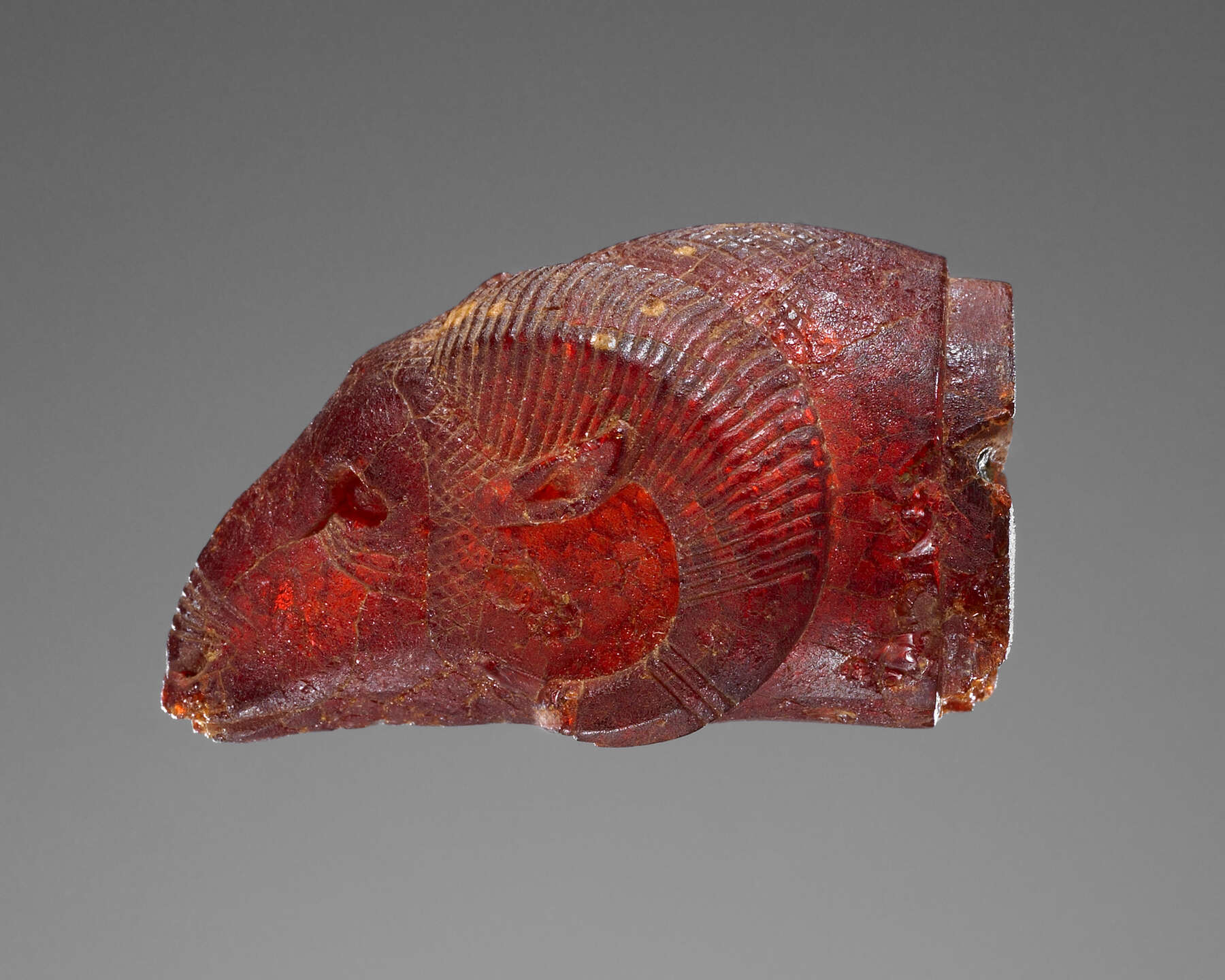42. Pendant: Ram’s Head
| Accession Number | 77.AO.81.11 |
| Culture | Italic or Etruscan |
| Date | 500–400 B.C. |
| Dimensions | Length: 21 mm; width: 18 mm; depth: 15 mm; Weight: 33.3 g |
| Subjects | Ram |
Provenance
–1977, Gordon McLendon (Dallas, TX), donated to the J. Paul Getty Museum, 1977.
Condition
The pendant is largely intact, except for a chip missing from the tip of the left horn and a large, wedge-shaped chip missing from the base, which leaves the suspension hole exposed. The amber is laced with fine, widely spaced cracks. An inclusion is visible at the throat. The amber is dark brown in ambient light, perhaps due to consolidation with amber oil. There is some yellow-ocher degradation residue in the carved interstices. In transmitted light, the pendant appears dark red. Some transparency is noted in the areas of modern chips. A 2 mm horizontal perforation for suspension runs through the collar area of the back, about 1 mm below the surface. Probable metallic residue remains in the stopped bore on the proper right side of the head.
Description
The head is finely rendered. Incised wavy ridges on the horns begin at the forehead and extend to the intersection with the tip of the ear; the remaining involution of the horn is smooth. The tips of the horn flare outward. The eyelid is distinct, with a sharp outer edge, and the eye sockets are deeply bored. The cap of fleece on the poll rises above the plane of the face; the separation is delineated by a lateral incision. Shallow cross-hatching indicates the fleece on the poll and over the neck area. The depression of the throat is indicated by a faintly incised triangle under the mandible. The upper lip overhangs the lower lip, and the chin is rendered distinctly. The nostrils are incised. The ears are long, straight, and narrow and lie flat on the horns, with an incised line visible in the middle of the ear.
Discussion
See the entry for (cat. no. 39).

